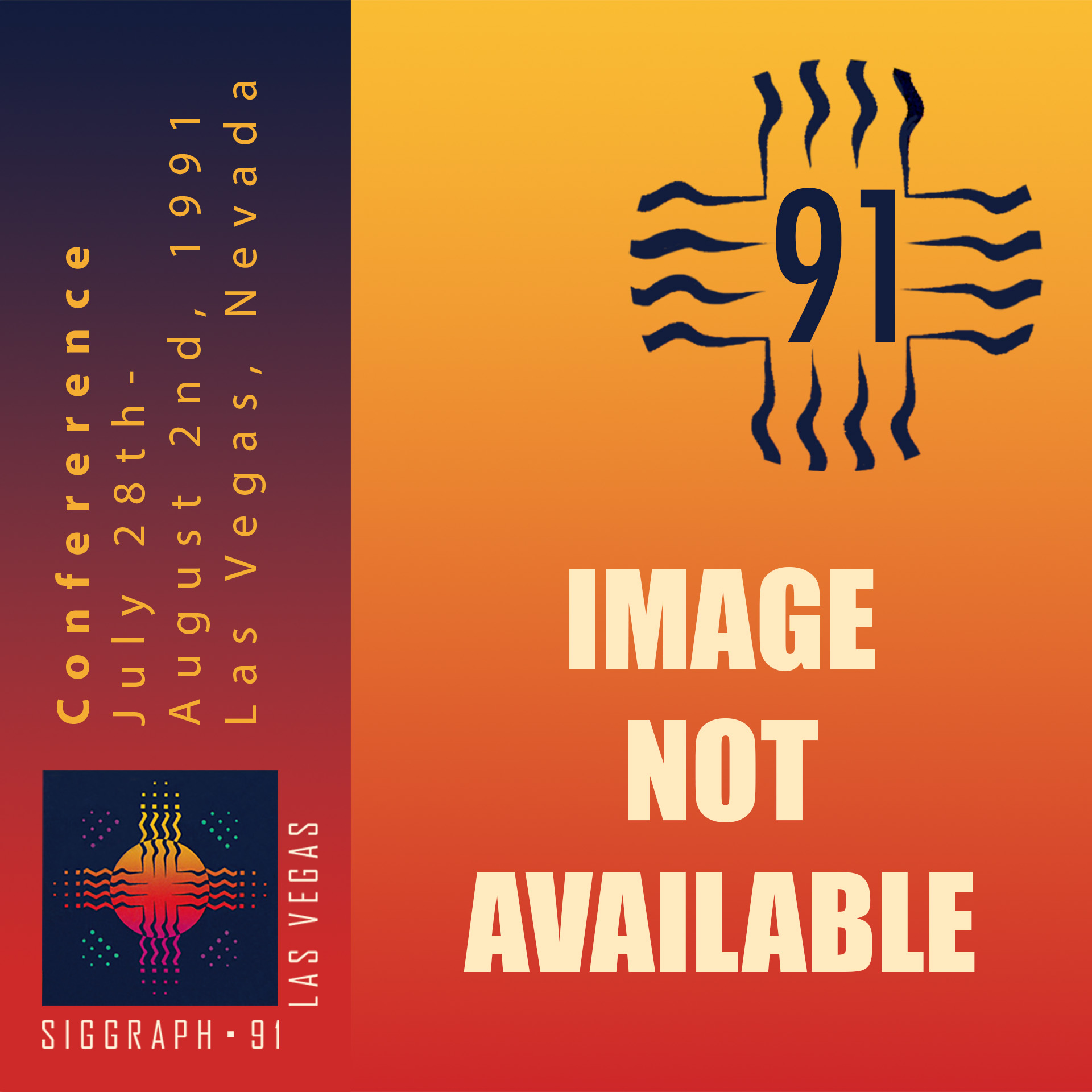“EXPO’92 Guest Information System” by Jones
Conference:
- SIGGRAPH 1991
-
More from SIGGRAPH 1991:


Type(s):
E-Tech Type(s):
- Hypermedia / Hypertext
- William E. Bennett
- Stephen Boies
- Sharon L. Greene
- Susan Spraragen
- Charlie Wiecha
- Christian (Chris) Cesar
- Thomas (Tom) Cofino
- John Gould
- Shirley Hsieh
- Joseph Kesselman
- Uri Shani
- Jacob Ukelson
- Paco Curbera Costello
- Angel Llopis Vela
- Richard Mushlin
- Javier Martinez
- Juan Rojas Romero
- Magarita Lopez Sanchez
Title:
- EXPO'92 Guest Information System
Program Title:
- Demonstrations and Displays
Presenter(s):
Collaborator(s):
Project Affiliation:
- IBM T. J. Watson Research Center
Description:
From April through October 1992, Seville, Spain will host a Universal Exposition to commemorate the quincentennial of Columbus’s landing in the Americas. The event is the latest in a line of expositions whose heritage can be traced to London’s Great Exhibition of 1851.
IBM, as part of its overall responsibility for information processing at EXPO’92, is providing a
Guest Information System with a basic interaction technique that requires visitors to touch a screen, glide into an active area, and lift off. EXPO’92 visitors will always be within sight of one of the 33 networked guest information kiosks scattered throughout the fair. Each kiosk, containing seven guest stations and a local server, will be connected to a central kiosk control. and production center. Guests will explore the EXPO’92 site electronically by navigating through a library of about 10.000 maps and scanned images. The images – organized into hyperstories about the pavilions, events, restaurants, and other attractions of EXPO’92 – are accompanied by graphics, music, sound effects, and text. Much of this information is dynamic and will be updated daily.
Although the Guest Information System will run in Spanish, English, and French, many visitors will not be fluent in any of these languages. To reach the widest possible audience, the system maximizes graphical presentation and minimizes the use of verbal cues to convey essential information.
When the user touches down anywhere on the screen, the system highlights “active” areas with bright blue rectangular “hotspots” that lead to further information. The hotspots remain highlighted as long as the user is touching the screen. When the user slides into a hotspot, it changes color, and if appropriate, a preview of where the hotspot will lead appears on the screen. When the finger is lifted off a hotspot, an item is selected. Lifting off from a non-hotspot area removes the display of hotspots. After the user lifts off to get a new image, a small version of the image just seen is placed in a trail of “breadcrumbs”. Each breadcrumb is itself a hotspot, allowing navigation backward through the path just taken.
The Guest Information System offers the general public something most people have never experienced before. Static information systems are beginning to appear in public, but dynamic information systems are more unusual. and two-wav services that operate without human intervention are rare or nonexistent. In fact. the unique EXPO’92 system provides much more than simple information. By using their spec-ally encoded entry ticket, visitors can make restaurant reservations, send and receive messages including voice mail, participate in opinion polls and electronic art con-tests, and browse an on-line news-paper. Most visitors will probably be intrigued by this broad range of options. For others, the system may raise privacy issues and speculation about the balance between “system-in-control” and “guest-in-control”. They may ask themselves: “How much does the system know about me, anyhow?”
On the other hand, the system’s messaging and opinion poll capabilities raise some interesting possibilities for new types of group interaction. Through their encounters with the Guest Information System, visitors to EXPO’92 will experience a preview of the communication and service systems that may eventually become part of everyday life.
The Guest Information System is a collaborative project of the Interactive Transaction Systems
(ITS) group at the IBM T.J. Watson Research Center and IBM Spain’s Center for Language Technology (CTL).
Other Information:
Hardware and Software: 33MHz PS/2 Model 95, OS/2 Presentation Manager, 19-inch 6091 monitor with 1280 × 1024 resolution, touch screen, still video camera, microphone, speakers, ticket reader
References:
- Wiecha, C., Bennett, W., Boies, S.J., Gould, J.D., and Greene, S.
ITS: A tool for rapidly developing interactive applications.
ACM Transactions on Information Systems. Vol. 8, No. 3, July, 1990. - Gould, J.D., Boies, S.J., Lewis, C. Making usable, useful, pro-ductivitv-enhancing computer applications. Communications of the ACM (January 1991), pp. 74-85
- Boies, S.J., Ukelson, J.P., Gould, J.D. Using ITS tools to create an insurance industry application – a joint case study. IBM Research Report, RC 16467. 1991.
- Sitnik, E., Gould, J.D., Ukelson, J. Case study: using ITS to make a general purpose spreadsheet program. IBM Research Report, RC-16696. 1991.
- 5. Ukelson, J.P., Gould, J.D., Boies, S.J., Wiecha, C. Case study: using ITS style tools to implement IBM’s CUA-2 user interface stvle. IBM Research Re-port, RC-16170. 1991.




